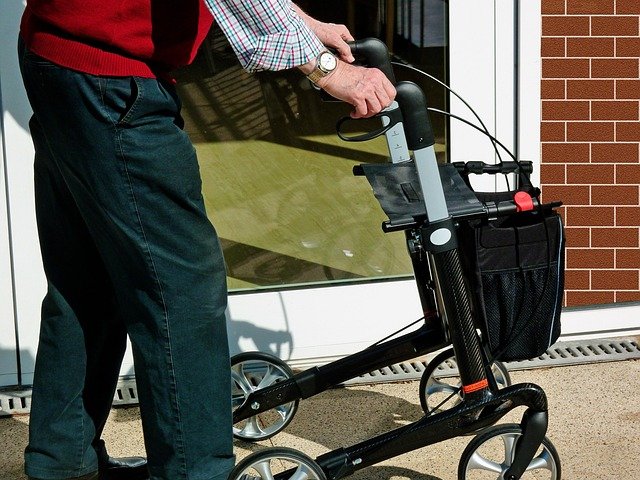The Rollator: A Practical Mobility Aid for Safety and Independence
For seniors and individuals with mobility challenges, maintaining independence and safety while moving around is crucial. The rollator, a modern evolution of the traditional walker, has emerged as a practical solution to address these needs. This article explores the rollator, its benefits, and key considerations for those considering this mobility aid.

What Is a Rollator?
A rollator is a type of walking aid that consists of a frame with wheels, handlebars, and typically a built-in seat. Unlike traditional walkers, rollators are designed to be pushed rather than lifted, making them easier to maneuver for many users. They usually feature three or four wheels, with four-wheeled models being the most common and stable option for everyday use.
Rollators are engineered to provide support and balance while allowing for a more natural walking motion. The wheels enable smooth movement across various surfaces, while hand brakes offer control and safety when stopping or resting. The built-in seat provides a convenient resting spot, making rollators particularly useful for individuals who need frequent breaks during walks or while running errands.
Benefits of Using a Rollator
Rollators offer numerous advantages over traditional walkers and other mobility aids:
-
Improved Mobility: The wheeled design allows for easier and more fluid movement, reducing fatigue and strain on the upper body.
-
Enhanced Stability: Four-wheeled models provide a stable base, decreasing the risk of falls and increasing user confidence.
-
Convenience: The built-in seat and storage basket make rollators practical for everyday activities, from shopping to outdoor walks.
-
Posture Support: Rollators encourage users to maintain a more upright posture, which can help alleviate back pain and improve overall balance.
-
Versatility: Many rollators can be used both indoors and outdoors, adapting to various terrains and environments.
-
Independence: By providing reliable support and rest options, rollators enable users to maintain their independence and engage in daily activities with greater ease.
Who Should Use a Rollator?
Rollators are suitable for a wide range of individuals, including:
-
Seniors with balance issues or limited mobility
-
People recovering from surgery or injury
-
Individuals with chronic conditions affecting mobility, such as arthritis or Parkinson’s disease
-
Those who experience fatigue or shortness of breath when walking
-
Anyone who needs additional support and stability while moving around
It’s important to consult with a healthcare professional before choosing a rollator, as they can provide personalized recommendations based on individual needs and physical conditions.
Key Features to Look For
When selecting a rollator, consider the following key features:
-
Weight Capacity: Ensure the rollator can safely support the user’s weight.
-
Adjustable Height: Handlebars should be adjustable to accommodate the user’s height for proper posture and comfort.
-
Brake System: Look for easy-to-use hand brakes and additional parking brakes for safety when seated.
-
Wheel Size: Larger wheels generally perform better on uneven surfaces and outdoor terrain.
-
Foldability: A compact, foldable design is crucial for storage and transportation.
-
Seat and Backrest: Check for a comfortable, sturdy seat with a supportive backrest for resting.
-
Storage Options: Consider models with under-seat storage baskets or pouches for carrying personal items.
-
Frame Material: Lightweight yet durable materials like aluminum are ideal for easy maneuverability and longevity.
Price Range and Popular Brands
Rollators vary in price and features, catering to different needs and budgets. Here’s a comparison of some popular brands and their offerings:
| Brand | Model | Key Features | Price Range |
|---|---|---|---|
| Drive Medical | Nitro DLX | Lightweight aluminum frame, large front wheels, foldable | $150 - $200 |
| NOVA Medical Products | Traveler 3-Wheel | Compact design, hand brakes, storage pouch | $100 - $150 |
| Medline | Premium Empower Rollator | Padded seat, adjustable armrests, cup holder | $180 - $230 |
| Hugo Mobility | Elite Rollator | Seat with backrest, under-seat storage, tool-free assembly | $120 - $170 |
| ProBasics | Transport Rollator | Dual-function as rollator and transport chair, footrests | $200 - $250 |
Prices, rates, or cost estimates mentioned in this article are based on the latest available information but may change over time. Independent research is advised before making financial decisions.
When choosing a rollator, consider your specific needs, budget, and intended use. Some models may offer additional features like ergonomic grips, reflectors for visibility, or terrain-specific wheels, which could be beneficial depending on individual requirements.
In conclusion, rollators represent a significant advancement in mobility aids, offering safety, independence, and versatility for users. By understanding the key features, benefits, and available options, individuals can make informed decisions when selecting a rollator that best suits their needs and lifestyle.
This article is for informational purposes only and should not be considered medical advice. Please consult a qualified healthcare professional for personalized guidance and treatment.




